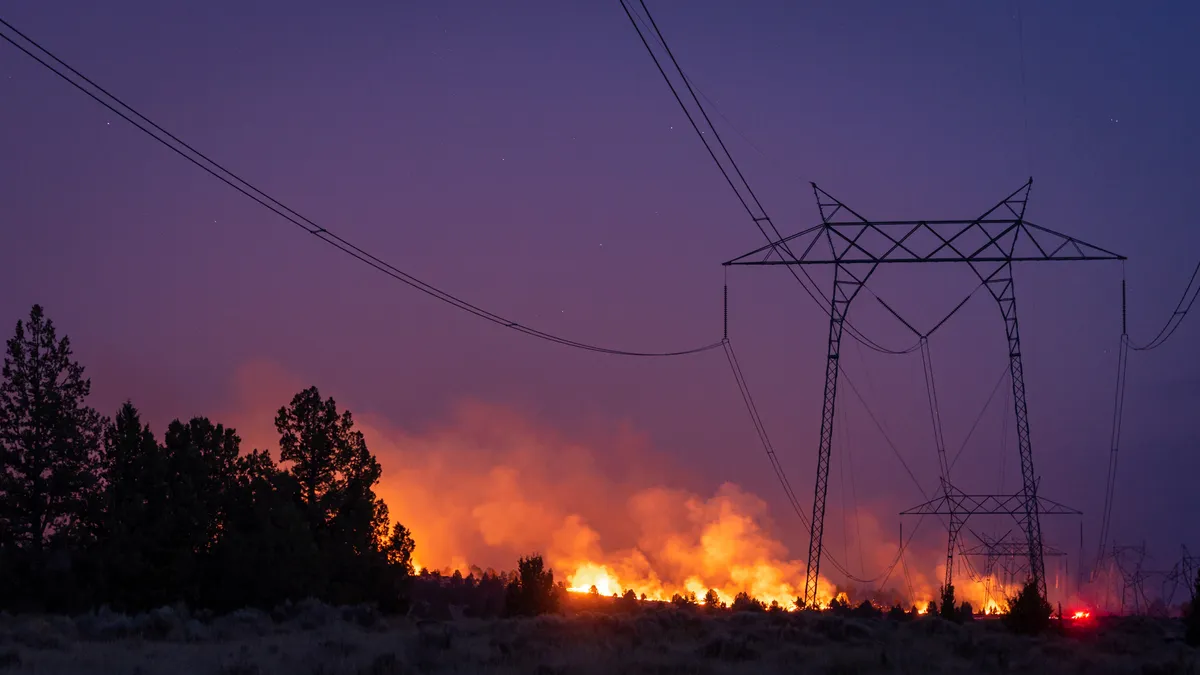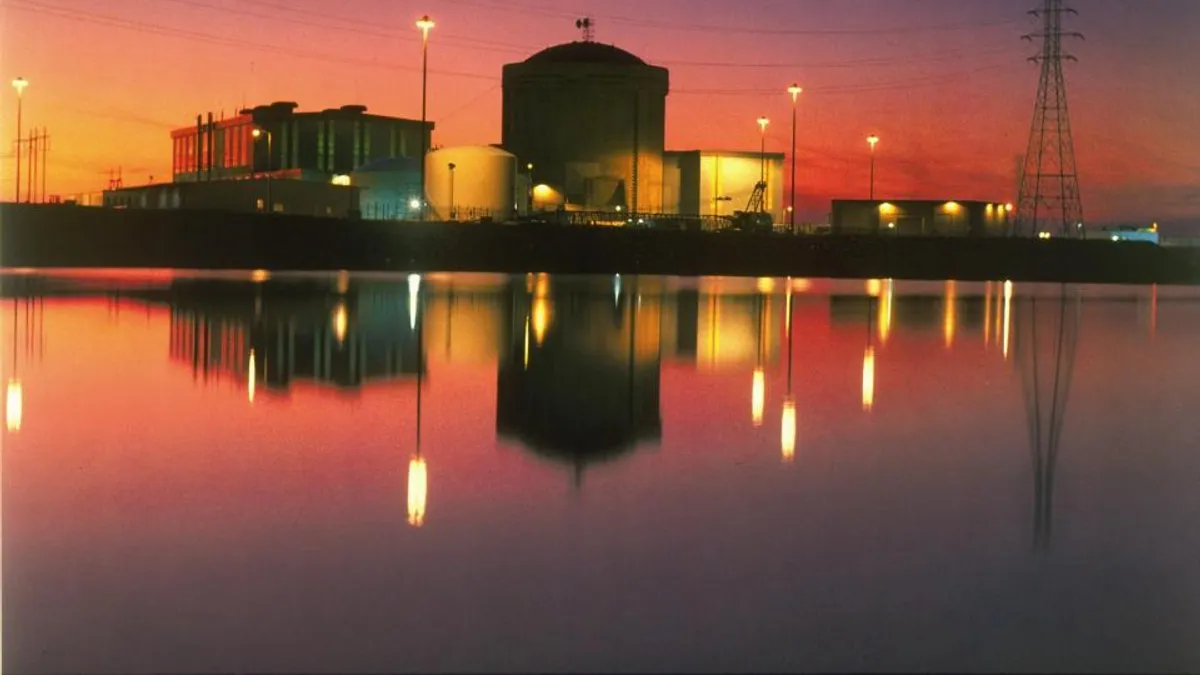Clean Power Plan. Reforming the Energy Vision. Exelon and Pepco.
Those are just some of the buzzwords circulating through the news cycle this year as the power sector kept its eyes pinned on federal climate regulations for utilities, an ambitious proceeding to upend their business model, and a monster merger in the nation’s capital.
In recognition of the eventful year, Utility Dive offers its inaugural Dive Awards. A few months ago, we sent you a survey asking for nominees in 10 categories. Utility Dive then narrowed the list with the help of a panel of industry experts, with our editors making the final choices. Here are your winners:
Company of the year
Winner: Berkshire Hathaway Energy
BHE and its subsidiaries have not made many headlines, but their presence has been felt in high-profile solar proceedings, federal power regulations and the Western energy market.
BHE’s subsidiaries saw a mixed bag of success during solar rate proceedings. Its subsidiary NV Energy was embroiled in Nevada’s controversial net metering proceeding, which slashed retail rates and excluded a grandfathering provision for 32,000 existing rooftop solar customers until a last minute compromise.
Beyond solar, BHE’s utilities have also played a major role in expanding the Western Energy Imbalance Market, as well as having an outsized influence on reforming federal regulations like PURPA.
Other nominees: Duke Energy; Rocky Mountain Institute’s Business Renewables Center; Tesla Motors; NextEra Energy.
CEO of the year
Winner: Chris Crane, CEO of Exelon
At the beginning of 2016, Exelon’s CEO Chris Crane faced a collapsing merger deal with Pepco Holdings and a fleet of unprofitable nuclear plants. But by the end of the year, he now leads the nation’s largest utility by customer base and netted financial support for his struggling nuclear generation in New York.
He overcame rejections from Washington D.C.’s Public Service Commission twice, and managed to hash out a settlement with the mayor’s office that included provisions to protect ratepayers from rate hikes. Gov. Andrew Cuomo’s Clean Energy Standard was another win for Exelon, but the company is still attempting to win financial support for two Illinois nuclear plants with a bill pending in the state legislature. If it fails, the says it will be forced to shutter its Clinton and Quad City plants early.
Because of that, Crane now wants to challenge the structure of organized wholesale markets.
Though the year is nearly out, Crane assured Utility Dive that he doesn’t plan to slow down in his plans to reform markets. While the future of the Illinois plants remains in question, Crane's ambitious efforts to expand his business and support his fleet earned him the award.
Other nominees: Commonwealth Edison CEO Anne Pramaggiore; Southern Co. CEO Tom Fanning; PG&E CEO Tony Earley; Southern California Edison CEO Pedro Pizzarro
Disruptive idea of the year
Winner: Reforming the Energy Vision
New York’s Reforming the Energy Vision launched two years ago, but this was the year it captured the power sector’s imagination. As the initiative moves closer to implementation, other states began spawning similar proceedings this year.
A California regulator rolled out a plan to align utility revenue models with distributed energy resources. And Maryland launched a REV-like proceeding in September. Many other states, while not taking such comprehensive actions like REV, are starting grid modernization initiatives. Other states planning grid modernization efforts include: Ohio, Illinois, Washington D.C., Massachusetts and Minnesota.
Though REV is still a year out from implementing many of its proposals, the sheer breadth of its influence earned it the award.
Other nominees: Aggregated DERs; Net metering successor tariffs; Residential demand charges; Corporate renewable PPAs
Transformation of the year
Winner: Renewable production/investment tax credits
Solar developers scrambled last year to nail down contracts before the federal investment tax credit expired at the end of 2016, essentially ending any financial relief for residential customers. The wind production tax credit had already expired two years earlier.
But in an 11th-hour compromise in Congress’ last legislative session in 2015, lawmakers agreed to extend both in exchange for lifting the oil embargo in place since the 1970s.
Before the extension, analysts expected natural gas to make up most of the U.S.’ new capacity additions in the next decade. Now, analysts expect renewable energy will make up most of those new additions. But neither industry expected such a change, especially at the last minute.
Other nominees: Exelon-Pepco merger; NextEra-Oncor deal; Clean Power litigation; Xcel Energy
Obsession of the year
Winner: Clean Power Plan
The Clean Power Plan marked the first time the power sector faced a set of regulations aimed at them to reduce greenhouse gas emissions. Key to President Obama’s climate legacy, the rules required each state to slash a specified amount of emissions from its power plants. Even though the finalized plan was stayed earlier this year by the Supreme Court, it helped spur a nationwide trend toward decarbonization.
This year in particular has seen the plan’s influence take effect. Coal generation has slipped to No. 2 as utilities slowly switch to natural gas as a cleaner and cheaper fuel source. Renewable energy development has also grown as more utilities invest in utility-scale projects.
"In many ways, [the Clean Power Plan] codified market forces already at work that are driving the adoption of energy efficiency, renewable energy and grid services."
Lisa Frantzis
Senior Vice President for Strategy, Advanced Energy Economy
"Regardless of the outcome of legal and political challenges to the final rule, it's clear the U.S. EPA has presented state air and energy regulators with achievable targets and a wide array of tools for compliance," said Lisa Frantzis, senior vice president for strategy at Advanced Energy Economy, a trade group. "In many ways, it codified market forces already at work that are driving the adoption of energy efficiency, renewable energy and grid services that independent modeling shows can reduce costs for customers, create jobs and economic impact, and offer more competitive energy options."
While Donald Trump’s presidency could finish the Clean Power Plan, the outsized impacts on regulation and the nation’s power mix earned it the award.
Other nominees: Solar+Storage; Solar rate design; Consumer choice; Nuclear power subsidies
Feud of the year
Winner: Nevada’s solar controversy
Regulators rolled out an unpopular decision to slash retail rates for rooftop solar customers participating in net metering -- a billing mechanism that gives customers a return on their excess energy sold to the grid -- and excluded a grandfathering provision for existing solar customers.
The decision drew fire from a wide array of interests: celebrities, Presidential candidates, other utility regulators and Gov. Brian Sandoval himself. New applications for rooftop solar dropped sharply after two leading solar developers, SolarCity and Sunrun, exited the state. As a result of this furor, Sandoval also chose not to reappoint Commissioner David Noble, who drafted many of the new rules.
The decision also shook up regulators and utilities nationwide currently undergoing similar debates. In Arizona, long a contentious hotbed over distributed solar, regulators and utilities took a more cautious manner in how they approached rate reform.
"The debate over grandfathering existing net metering customers in Nevada has been extremely contentious," said Autumn Proudlove, a senior analyst for North Carolina Clean Energy Technology Center. "As other states continue to evaluate and revise their net metering policies, they will look to the experiences of first movers like Nevada and are likely to consider the issue of grandfathering very carefully and early on."
For that reason, Nevada earned the title “Feud of the Year.”
Other nominees: Arizona solar debates; Exelon-Pepco merger; NextEra-HECO merger; Republicans vs. EPA
Deal of the year
Winner: Exelon-Pepco
Exelon’s $6.8 billion takeover of Washington.-based Pepco Holding stood on shaky ground at the beginning of 2016. At stake was whether the biggest merger of the year would make it after two years of jumping through regulatory hoops. The final hurdle, the District’s PSC, rejected the deal in late 2015, sending Exelon back to the drawing board.
But after hammering out a settlement with Mayor Muriel Bowser, Exelon and Pepco took the revised deal back to District regulators. But they rejected the deal and sent Exelon back with suggested changes. After making those revisions, Exelon and Pepco finally got the green light and, barring legal challenges, will become the biggest utility in the nation by customer base.
Though the merger is done, the size of the deal and the level of scrutiny could set a precedent for future mergers as well as regulatory oversight on M&A activity.
Other nominees: Tesla-SolarCity; NextEra-HECO; Southern-PowerSource; Duke-Piedmont Gas
Policymaker of the year
Winner: Audrey Zibelman, New York State Public Service Commission chair
Audrey Zibelman has said from the outset that Reforming the Energy Vision will not only shake up the utility business model, but will begin implementation faster than the normal glacial pace of regulatory proceedings. Before REV, Zibelman helped create the nation’s first wholesale electricity market as chief operating officer of the PJM Interconnection.
Now her influence has spread beyond REV. She is also involved in overseeing Gov. Andrew Cuomo’s Clean Energy Standard, which includes financial supports for the state’s struggling nuclear generation and an aggressive 50% by 2050 renewables standard.
"With her great intellect, vision and collaborative nature, Chairman Zibelman has been the right public official at the right time for negotiating truly ground-breaking and challenging terrain," AEE's Frantzis said. "We applaud her efforts to modernize the 21st century electricity system for New York State and being a role-model to other states and markets across the nation."
REV has already showed its worth as an idea by infecting other regulatory proceedings. But Zibelman’s part in guiding the process is equally precedent-setting, since she started this effort before a high level of DER penetration. Only three years into the proceeding, utilities are already implementing DER pilot projects and setting up the framework for a new business model.
Other nominees: Doug Little, Chair of Arizona Corporation Commission; David Noble, Public Utilities Commission of Nevada; Joanne Doddy Fort, DC Public Service Commission; Catherine Sandoval, California Public Utilities Commission
Biggest miss of the year
Winner: SunEdison bankruptcy
Once the world’s largest renewable energy developers, SunEdison’s bankruptcy threw into doubt the financial security of the renewable energy sector and of the viability of the yieldco, a popular financing tool for such companies. It was a lightning-quick series of events that felled the renewable giant.
Missed project deadlines, a $11.7 billion debt load and an expensive acquisition of rooftop solar developer Vivint Solar contributed to its downfall within the past year. SunEdison’s bankruptcy also took down flow battery developer Imergy, which had partnered with the company for microgrid projects in India.
Other nominees: Hunt-Oncor deal; NextEra-HECO merger; PREPA debt; Maine net metering veto
Most ambitious project of the year
Winner: Diablo Canyon nuclear plant shutdown
Many utilities are struggling to keep their nuclear generation afloat as low natural gas prices and high operating costs make them unprofitable. Some utilities made the case that the carbon-zero resource is vital for climate goals. But PG&E chose to circumvent that notion by proposing to close its 2,240 MW Diablo Canyon Nuclear Plant, the last remaining operating nuclear plant in the state.
To meet California’s climate target of 50% renewables by 2030, PG&E intends to replace the 18,000 GWh of annual generation with a mixture of energy efficiency and zero carbon energy. But some critics doubt that it can do so without raising carbon emissions and costs for customers.
Whether replacing nuclear generation with other carbon-free resources is cost-effective remains to be seen. But few other projects match PG&E’s ambitious vision, earning it the title of “Most Ambitious Project of the Year.”
Other nominees: NY’s REV; Hawaii co-op KICU solar+storage project; Green Mountain Power’s Tesla Partnership; SolarCity software for DERM
The 2016 Dive Awards were distributed across our twelve vertical markets: BioPharma, CIO, Construction, Education, Food, Healthcare, HR, Marketing, Retail, Supply Chain, Utility, and Waste. Click here to see all of the Dive Awards winners.





















